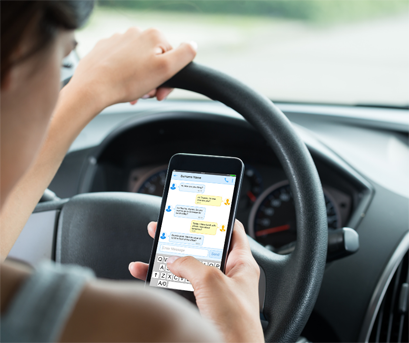Focus on driving
June 1, 2021
More than 700 people are injured in distracted driving crashes every day in the U.S. according to the National Safety Council.
Most of distracted driving information focuses on taking your eyes off the road and hands off the wheel. In order to solve these problems technology has been created to have “hands-free” phone calls, voice to text features, even the ability to have your texts read aloud to you.
Hands-free devices often are seen as a solution to the risks of driver distraction. However, a third type of distraction can occur when using cell phones while driving – cognitive – which is taking your mind off the road.
Many of today’s vehicles offer features such as built in GPS, weather & traffic reports, hundreds of music channels, & much more. These “infotainment” systems are a huge convenience, but also a huge distraction. Fifty-three percent of drivers believe if manufacturers put "infotainment" dashboards and hands-free technology in vehicles, they must be safe. In reality, this multitasking technology is really more of a convenience than a safety feature.
When a driver is distracted by items such as texting or a phone conversation, it can create responses such as delayed braking time and cause the driver to not see traffic signals often leading to a crash. Studies have shown that drivers using cell phones look but fail to see up to 50 percent of the information in their driving environment.
Research shows conversations held over the phone are far more distracting than conversations with passengers in the car. Adult passengers often actively help drivers monitor and discuss traffic. Passengers also tend to suppress conversation when driving conditions are demanding. Neither of these things are possible via conversations on the phone.
Here in Minnesota, one in seven crashes is caused by distracted driving. In 2019, distracted driving led to 3,279 injuries and 32 deaths. In Minnesota, August of 2019 was when the “Hands-Free” law went into effect making it illegal for drivers to read, send texts and emails, and access the internet while the vehicle is in motion or a part of traffic. That includes sitting at a stoplight or stop sign.
The safest way to operate a vehicle is to give it your undivided attention. If you need to use your GPS, get everything setup before departing. Ignore the texts and calls that might occur via your phone even if hands-free is an option. Just a few seconds of distraction can change lives forever.
